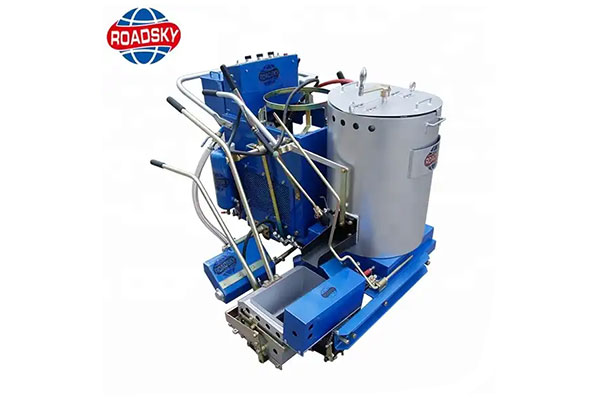How Does Road Marking Machine Work?
Road markings play a crucial role in ensuring safe and organized traffic flow on our roads. To achieve accurate and efficient road markings, specialized equipment known as road marking machines are employed. In this article, we will delve into the inner workings of these machines.

Understanding the Basics:
1. Paint Delivery System:
At the heart of a road marking machine is its paint delivery system. Typically, these machines use specialized paint, often thermoplastic or cold plastic, which adheres well to the road surface. The paint is stored in a designated reservoir within the machine.
2. Application Method:
The application method varies depending on the type of road marking machine. Broadly, there are two common methods: spraying and extrusion.
- Spraying Method: In the spraying method, the machine uses a series of nozzles to spray the paint onto the road surface. This method is commonly seen in airless stripers, where the paint is pressurized and sprayed onto the road in a fine mist.
- Extrusion Method: The extrusion method involves the use of specialized dies or molds. The paint is pushed through these dies onto the road surface, forming the desired line or symbol. This method is often employed in thermoplastic road marking machines.
The Precision Behind the Process:
Guidance Systems:
To ensure accuracy and precision in marking, road marking machines are equipped with advanced guidance systems. These systems may include laser-guided technology, GPS, or cameras that help the machine follow a predefined path.
Adjustable Parameters:
Operators can adjust various parameters on the road marking machine to meet specific requirements. These parameters may include line width, thickness, and drying time, allowing for customization based on road design and regulations.
Reflective Elements (Optional):
For enhanced visibility, some road marking machines are equipped with systems for applying reflective glass beads onto the fresh markings.
The Role of Thermoplastics:
1. Melting and Application:
In the case of thermoplastic road marking machines, the paint used is in solid form initially. The machine is equipped with a heating system (Thermoplastic Preheater) that melts the thermoplastic material, turning it into a liquid for application on the road.
2. Quick Drying:
One of the advantages of using thermoplastic materials is their quick-drying nature. This allows for faster completion of road marking projects, minimizing disruptions to traffic flow.
Cold Plastic Machines:
1. Two-Component System:
Cold plastic road marking machines often use a two-component system. The paint is stored in separate containers until it is mixed and applied to the road. This method is known for its durability and resistance to wear and tear.
2. Applicability in Various Conditions:
Cold plastic road marking machines are versatile and can be used in a wide range of weather conditions. The paint adheres well to the road surface, providing long-lasting markings.
Conclusion:
Road marking machines play a pivotal role in creating the organized and safe road networks we rely on daily. Understanding their working mechanism sheds light on the technology and precision involved in the creation of road markings, ensuring smooth traffic flow and enhancing overall road safety. As technology continues to evolve, we can anticipate further advancements in road marking machinery, contributing to more effective and sustainable transportation systems.

